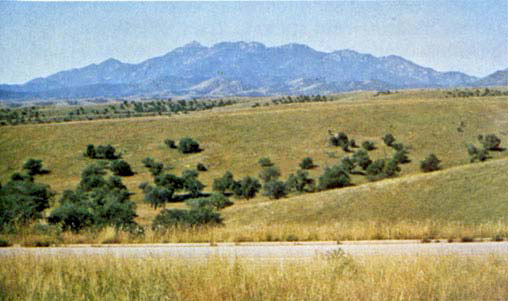About Fire Behavior Fuel Models (FBFMs)
Several models in IFTDSS rely on Fire Behavior Fuel Models (FBFMs) to run. Fire Behavior Fuel Models are automatically included as part of the Landscape File (.lcp) that you create when you generate a landscape.
As part of the process of predicting potential behavior and effects of wildland fires, forest/fire scientists have developed fire behavior fuel models: sets of information on the fuelbed inputs to be used in specific fire behavior or fire effects models (Rothermel, 1972; Rothermel, 1983; Anderson, 1982; Scott and Burgan, 2005). IFTDSS uses these descriptions of fuel properties as input parameters which are then used to calculate fire behavior potentials.
These collections of fuel properties are sometimes referred to more briefly as fuel models, though we prefer to refer to them as fire behavior fuel models because there are other kinds of fuel models that are used for other purposes.
Two FBFM Sets
There are two sets of FBFMs in common use, Anderson 13 and Scott & Burgan 40:
Anderson 13
Anderson's original 13 fire behavior fuel models are referred to as FM 1 through FM 13 (or sometimes just 1 through 13). These are the original 13 FBFMs created to address fire behavior under wildfire conditions. The fire behavior fuel models are classified into four groups:
- Grasses
- Brush (or shrubs)
- Timber
- Slash
The differences in fire behavior among these groups are basically related to the fuel load and its distribution among the fuel particle size classes (Anderson, 1982).
Scott and Burgan 40
Scott and Burgan's (2005) FBFMs expands the range of fuel models to improve predictions outside of the more narrow wildfire conditions under which the original 13 were developed. This new set also provides more options for representing forest litter and litter/grass/shrub mixes, fuels following different treatment scenarios, and fire spread under a wider range of humidity.
Scott and Burgan's additional 40 fire behavior fuel models are named with letter and number combinations. With the Scott and Burgan models, the letters represent the predominant fuel as follows:
- GR = grass
- GS = grass-shrub
- NB = nonburnable
- SH = shrub
- SB = slash-blowdown
- TL = timber litter
- TU = timber-understory
Additional Information on FBFMs
See the topics below for additional information on FBFMs:
- FBFM and Their Environments: A summary of each FBFM with a photograph of a typical environment for each.
- Comparison Spreadsheet for FBFMs: Download a spreadsheet to easily compare up to eight FBFMs.
- Heat Values for some FBFMs: Values for heat per unit area for some of the original 13 fire behavior fuel models.
- Moisture Inputs for FBFMs: Information on fuel moisture input(s) required for each FBFM.
- Fuel Moisture Tables: General guidelines and information on fuel moisture content and curing levels in fuels.